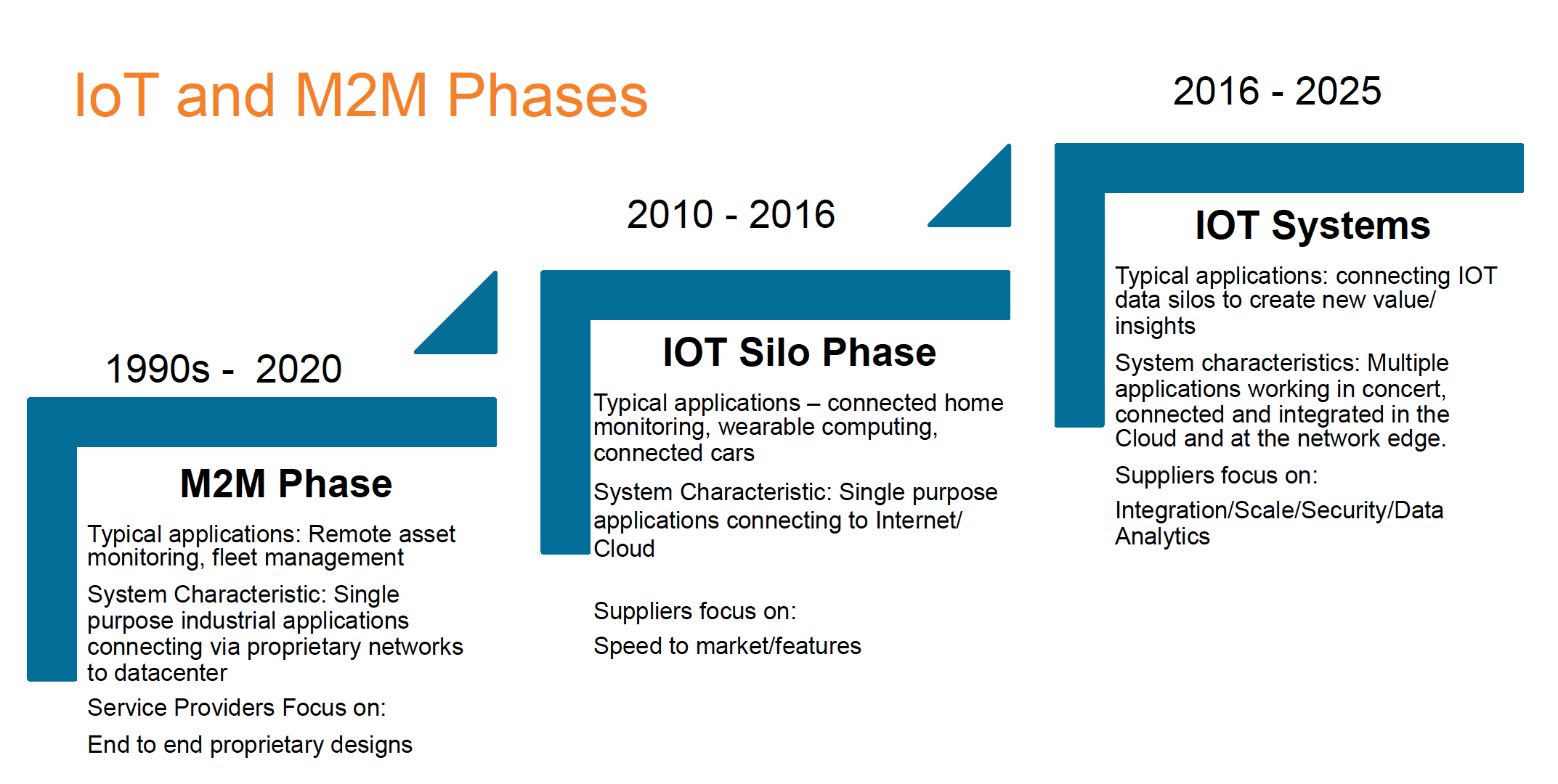Last week, I hosted a webinar, “What to Consider When Selecting a Platform for Internet of Things (IoT) App Development” along with Brian Partridge of 451 Research. It was an interesting discussion on what’s driving IoT adoption, emerging best practices to build IoT solutions and how to enable app ecosystems around IoT devices.
Brian opened the session by covering overall trends in the M2M and IoT space. In particular, I liked his perspective of on the overall shift from the initial M2M-focused solutions, to broader consumer-focused yet standalone IoT solutions, to eventual IoT systems that integrate more openly and broadly across the ecosystem.

This fits closely with our view of the three functional layers of an overall IoT solution: (1) the device and data layer, (2) the operational app layer, and (3) the ecosystem enablement layer. You can read about this viewpoint in our previous blog post “Key Components of an IoT Application Platform."
We also had a ton of great questions during the webinar and thought they were worth sharing in a separate blog post, since many people looking into this space may be seeking similar guidance:
Industry/General IoT
Q: If I am looking to be an IoT developer, where can I focus my energies?
A: Assuming you are referring to an IoT “app” developer (not a hardware engineer), then our suggestion would be to focus on what makes you a strong app developer in general. This means understanding the best practices, solutions, and frameworks that comprise the IoT app stack. Focus on learning a backend server technology, like Node.js, which is increasingly being adopted for modern apps and at least one native mobile client side technology like iOS or Android.
Q: Since IoT is just getting started it looks like there are no standards. Except for the Open Group is there any other group you are aware of developing international standards for IoT?
A: Some of the key standards and consortiums around IoT interoperability include: Open Internet Consortium (OIC), Industrial Internet Consortium, and AllSeen Alliance. There are also alliance groups around the wirless connectivity protocols such as WiFi, Zigbee, and ZWave. Expect to see this space evolve over the next few years.
Q: How do we trust what runs and where? E.g. I don't want hackers running my temps.
A: There are security best practices that would need to be implemented at various levels in the IoT app stack. Ensuring you follow these practices, such as encryption and secure pairing will help ensure app security. Pushing as much business logic and heavy lifting to a centralized backend server can also help you get a handle on security, and enable you to leverage deployment options that meet your compliance requirements, such as PCI or HIPAA.
Q: How about specific algorithms that I need to use to analyze the data and then consume the results?
A: Specific algorithms used depend on the IoT scenario and application. For example, a preventative maintenance IoT solution may gather data about vibrations on a motor, which is then processed by an algorithm to compare the data against a baseline to detect anomalies.
Q: Are Cities looking for integrated solutions like Integrated Lighting and Video Surveillance bundled together with analytics or are they willing to look at point solutions, which they can integrate as needed?
A: Smart-Cities initiatives can be very broad, often involving several stakeholders. Best-of-breed solutions are more likely used in these scenarios, because it is virtually impossible to find even large incumbents that do everything.
Q: How does a business begin to categorize/isolate their potential for IoT engagement?
A: The recommendation is to start top-down, and get executive buy-in no matter what the approach.
AnyPresence Specific
Q: With respect to the concerns around IP for HMI for example, are your license terms to address the issue of ownership versus right to use?
A: Yes - AnyPresence provides an IP ownership clause in our terms of service, so customers can both technically and contractually maintain the IP of their app components generated by the AnyPresence platform.
Q: Is AnyPresence a Rapid Application Development Platform?
A: AnyPresence has some rapid application development features, which help to accelerate full-stack app building. However, it is not a proprietary solution, so the user interface code is typically modified or built in native development frameworks.
Q: How does AnyPresence compare to other IoT platforms like IBM Bluemix. Does it come with a Flow Editor like Node Red?
A: AnyPresence is more complementary with Bluebox: our backend server and API server components can be hosted on Bluemix PaaS infrastructure, and use Bluemix services such as Watson. AnyPresence does not have a flow-editor like NodeRed, but has other abstracted rapid development tools such as object modeling, web service parsing, and a user interface starter kit builder.
Q: How about unreliable communication in IoT?
A: Unreliable communication in IoT scenarios can be handled by local network hubs, which reduce the dependency on live Internet connections, and client-side caching, and server-side bandwidth optimization techniques such as data pagination.
In case you missed the webinar, you can get access to the full replay here. If you have any questions regarding your company’s IoT strategy or how AnyPresence’s platform can accelerate IoT app development, feel free to reach out to us at info@anypresence.com